1. Use similar triangles to solve for x:
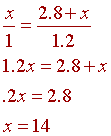
Now determine the volumes of the two cones and subtract:

2. First, solve for the equation of the lateral edge of the cone on the right hand side.
Note that it intersects the y-axis at (0, 16.8) and that it intersects the x-axis at (1.2, 0).
Therefore, its slope is m = - 14, and the equation is y = - 14x + 16.8.
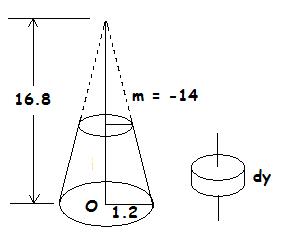
Now, we want to rotate this line about the y-axis from y = 0 to y = 2.8 (the top of the
truncated cone). Note that the disks have thickness dy. Before setting up the integral
for the volume, you must first solve the equation of the line for x in terms of y.
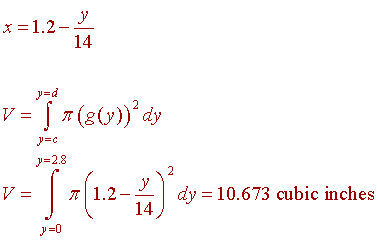
3. In the Shell Method, rotation is still about the y-axis but the function is in terms of x, and
thickness is therefore dx. Also, note that this must be done in two steps because the
heights of the shells are not found in the same way. From x = 0 to x = 1, the height of
the shells is a constant 2.8"; but from x = 1 to x = 1.2, the heights of the shells are from
the x-axis to the line y = -14x + 16.8.
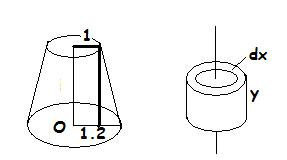
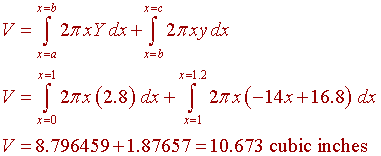
(4) To determine the area of an ellipse with major axis 2a and minor axes 2b, use the formula
 as the formula for the ellipse, and integrate the function in the first quadrant from
as the formula for the ellipse, and integrate the function in the first quadrant from
x = 0 to x = a, and then multiply by four.
You must first solve the equation  for y in terms of x in the first quadrant:
for y in terms of x in the first quadrant:

Now, find the area of the ellipse by integrating this function from x = 0 to x = a:
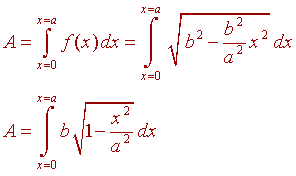
Now use the Method of Trig Substitution to integrate:
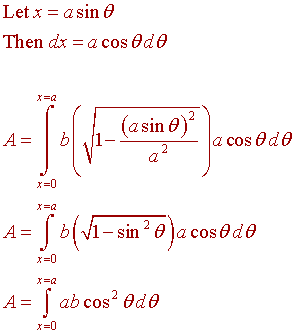
To integrate, use the trig identity called the double angle formula:
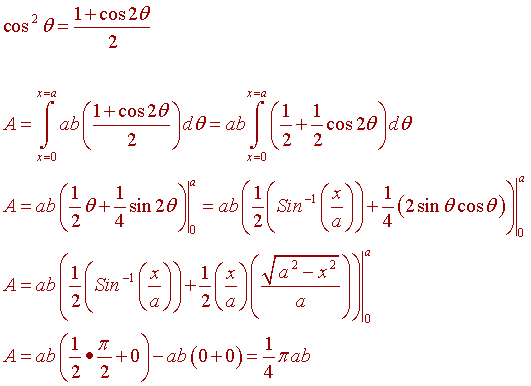
Now multiply by four, to obtain the formula for the area of an ellipse:

(5) Now to determine the volume of the elliptical cylinder, multiply the area of the base by the
height of the cylinder.

Six ounces of yogurt is equivalent to 10.83 cubic inches.
In computations #1, 2, and 3, we obtained 10.673 cubic inches.
In computation #4 and 5, we obtained 10.72 cubic inches.
The error probably lies in the measurements taken, but all computations were close.